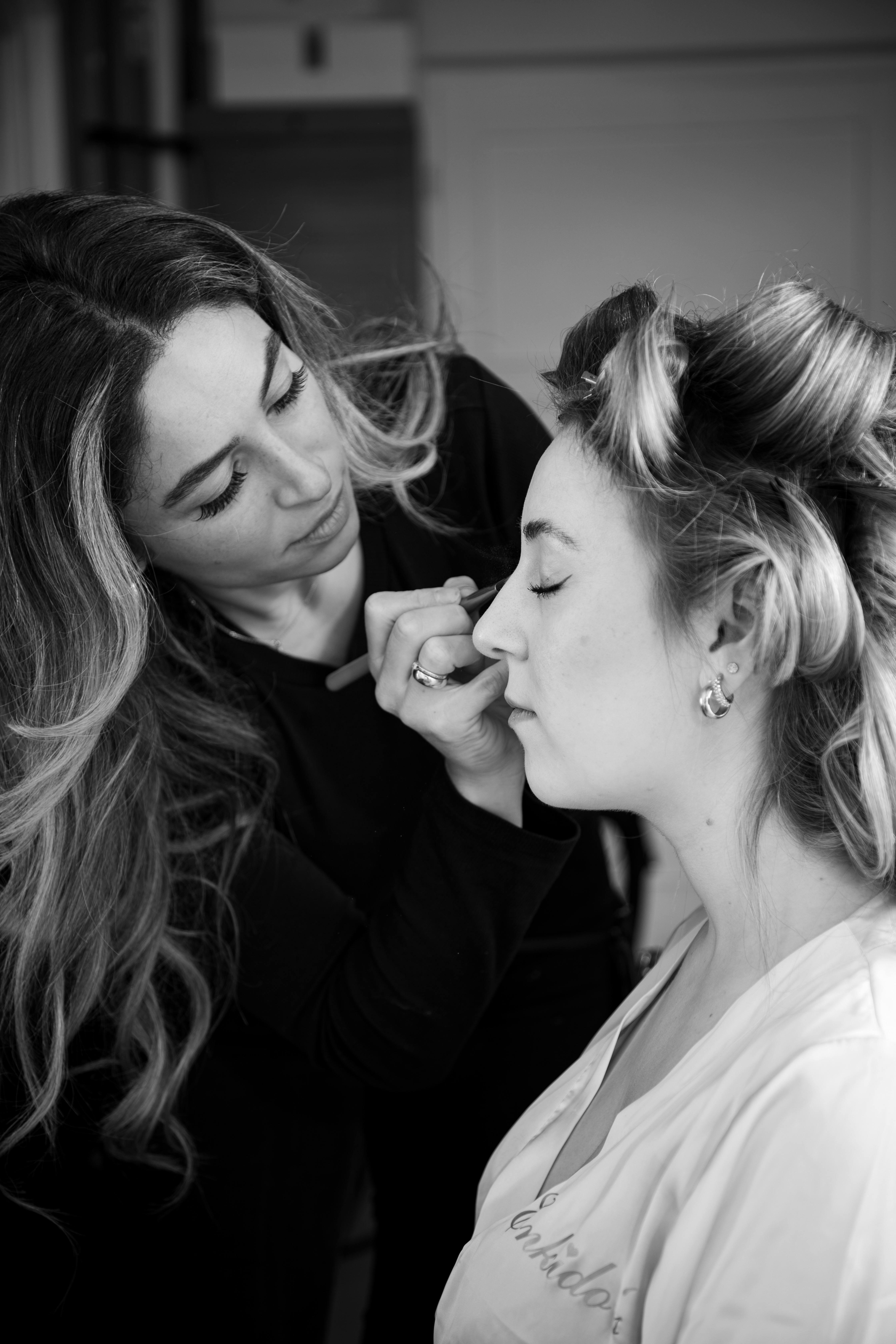Microshading brows have become a popular choice for those seeking fuller, more defined eyebrows. However, circumstances can change, and some individuals may wish to *remove or alter* their microshading. Whether due to a change in style preference, dissatisfaction with the results, or a desire for a more natural look, understanding how to effectively and safely remove microshading is crucial.
In the realm of cosmetic tattooing, microshading is a semi-permanent technique that enhances the eyebrows with a soft, powdered effect. While this procedure can be transformational, the need to remove or lighten it can arise. The process of removal requires careful consideration and the right approach to avoid damaging the skin.
It is essential to be informed about the various methods available for removing microshading brows. From professional laser removal treatments to natural fading techniques that can be done at home, each option has its own benefits and considerations. Proper *aftercare* is also vital to ensure the skin heals correctly and maintains its health.
If you’re considering removing your microshading brows, we invite you to connect with our experts at Permanent Makeup of Atlanta. Our team, led by Master Artist Cheryl Rosenblum, is ready to guide you through the process with professionalism and care. Call Us Today To Learn More! (404)229-7372
Understanding Microshading Brows

To effectively navigate the process of removing microshading brows, it’s essential to first understand what microshading entails. Microshading is a form of *semi-permanent makeup* designed to enhance the eyebrows with a subtle, shaded appearance. Unlike microblading, which uses fine hair-like strokes to mimic natural eyebrow hairs, microshading employs a stippling method, similar to tiny dots, to create a soft, powdered finish.
This technique is particularly favored for its ability to deliver a more natural look and is ideal for individuals with sensitive or oily skin, as it tends to last longer and works well in combination with other brow techniques. Typically lasting between one to three years, microshading provides a long-term solution for those seeking consistently flawless brows.
Microshading is performed by a trained and certified professional who uses a specialized machine or hand tool to deposit *pigment* into the dermal layer of the skin. The pigment is meticulously chosen to match the client’s natural brow color, ensuring a seamless and harmonious appearance. This procedure is considered less invasive than traditional tattooing, with a faster healing time.
Understanding the nature of microshading brows helps set realistic expectations for removal. As with all cosmetic procedures, the longevity and fading of microshading can vary based on factors such as skin type, lifestyle, and aftercare practices. Recognizing these aspects can aid in making informed decisions about removal methods and timelines.
Methods to Safely Remove Microshading

When considering *how to remove microshading brows*, it’s crucial to explore safe and effective methods. Several techniques can be utilized, each with its own benefits and considerations tailored to individual needs.
Laser Removal: One of the most common procedures, laser removal, uses high-intensity light beams to break down the pigment particles in the skin. This method is effective but may require multiple sessions depending on the depth and color of the pigment. It’s vital to have this procedure conducted by an experienced professional to minimize the risk of skin damage.
Saline Solution: An alternative to laser, saline removal involves injecting a saline solution into the microshaded area. This process lifts the pigment to the surface, where it forms a scab and eventually falls off. Saline removal is often preferred for its gentler approach and ability to work on a wide range of pigment types.
Glycolic Acid: This technique involves applying a glycolic acid solution to the brows, gradually fading the pigment over several treatments. It’s a non-invasive option that can be done at home or by a professional, though it requires patience as results are not immediate.
Microneedling: Often used as a supplementary method, microneedling can aid in pigment removal by promoting skin regeneration and helping fade the microshading over time. It’s typically used in conjunction with topical fading creams or serums.
Each of these methods should be considered carefully, taking into account factors such as skin type, the extent of microshading, and personal preference. Consulting with a professional ensures a tailored approach to safely and effectively removing microshading brows.
Professional Removal Techniques Explained

For those exploring *how to remove microshading brows* with precision, professional removal techniques offer a reliable solution. Seeking help from skilled technicians ensures a thorough and safe process, minimizing potential risks associated with DIY methods.
Laser Tattoo Removal: This advanced technique employs specific wavelengths of laser light to target and break down the pigment in the brows. The procedure is performed by trained professionals who adjust the laser settings according to the pigment type and skin tone. Although highly effective, laser removal requires multiple sessions and a healing period between treatments.
Saline Tattoo Removal: A popular alternative to laser, saline removal involves using a salt-based solution to draw out the pigment. The solution is applied using a tattoo machine, creating a controlled scab that lifts the pigment as it heals. This method is praised for its natural approach and ability to adjust to various skin types and colors.
Dermabrasion: This process involves exfoliating the top layers of skin to gradually remove the pigment. Dermabrasion is less common and typically reserved for cases where other methods are not suitable. It requires careful handling by professionals to prevent skin damage and ensure even results.
Each professional technique has its unique advantages, with the choice largely dependent on individual circumstances and desired outcomes. It’s essential to consult with a certified specialist, such as those at Permanent Makeup of Atlanta, to determine the most suitable method for your microshading removal needs.
Aftercare Tips for Microshading Removal

Once you’ve chosen a method for *how to remove microshading brows*, it’s crucial to follow proper aftercare to ensure optimal healing and skin health. Here are some essential aftercare tips to help guide you through the recovery process:
- Keep the Area Clean: Gently cleanse the treated area with a mild, fragrance-free cleanser. Avoid harsh scrubbing and pat the skin dry with a clean towel to prevent irritation.
- Moisturize: Apply a thin layer of a recommended post-procedure ointment or a gentle moisturizer to keep the skin hydrated and promote healing. Avoid products with alcohol or fragrances that may cause further irritation.
- Avoid Sun Exposure: Protect your skin from direct sunlight by wearing a wide-brimmed hat or using a broad-spectrum sunscreen with an SPF of 30 or higher. UV exposure can affect skin healing and pigment fading.
- Do Not Pick at Scabs: Allow any scabs that form to heal naturally. Picking or scratching can lead to scars or uneven pigment removal.
- Avoid Makeup and Skincare Products: Refrain from using cosmetics or other skincare products on the treated area until fully healed, as they can cause irritation or infection.
- Follow Professional Advice: Adhere to any additional instructions provided by your technician, as they are tailored to your specific procedure and skin type.
Proper aftercare is essential for a successful removal process and healthy skin recovery. By taking these steps, you can help ensure that your skin heals well, leaving you with a fresh canvas for your next beauty adventure.
Frequently Asked Questions on Microshading
As you explore more about *how to remove microshading brows*, you might have numerous questions. Here, we address some of the most frequently asked questions about microshading to help you make informed decisions:
- What is Microshading? Microshading is a semi-permanent makeup technique that uses a stippling method to create a soft, powdery effect on the eyebrows. It’s ideal for those seeking a fuller, more defined brow look.
- How Long Does Microshading Last? Typically, microshading can last between 1 to 3 years, depending on skin type, lifestyle, and aftercare. Touch-ups may be required to maintain the desired look.
- Is Microshading Painful? While everyone’s pain tolerance varies, most clients report minimal discomfort during the procedure, thanks to the use of numbing creams.
- Can Microshading Be Removed? Yes, microshading can be removed using techniques such as laser removal, saline solution, or glycolic acid. It’s important to consult with a professional to choose the best method for your skin type and desired outcome.
- Who Should Avoid Microshading? Individuals with certain skin conditions, such as eczema or psoriasis, or those prone to keloids should consult with a professional before undergoing microshading to assess suitability.
- What Are the Risks? As with any cosmetic procedure, there are risks such as infection or allergic reactions. Choosing a certified and experienced professional greatly minimizes these risks.
Understanding the intricacies of microshading helps ensure a smoother experience and satisfying results. If you have more questions or wish to learn about our classes, call us today to learn more! (404)229-7372

